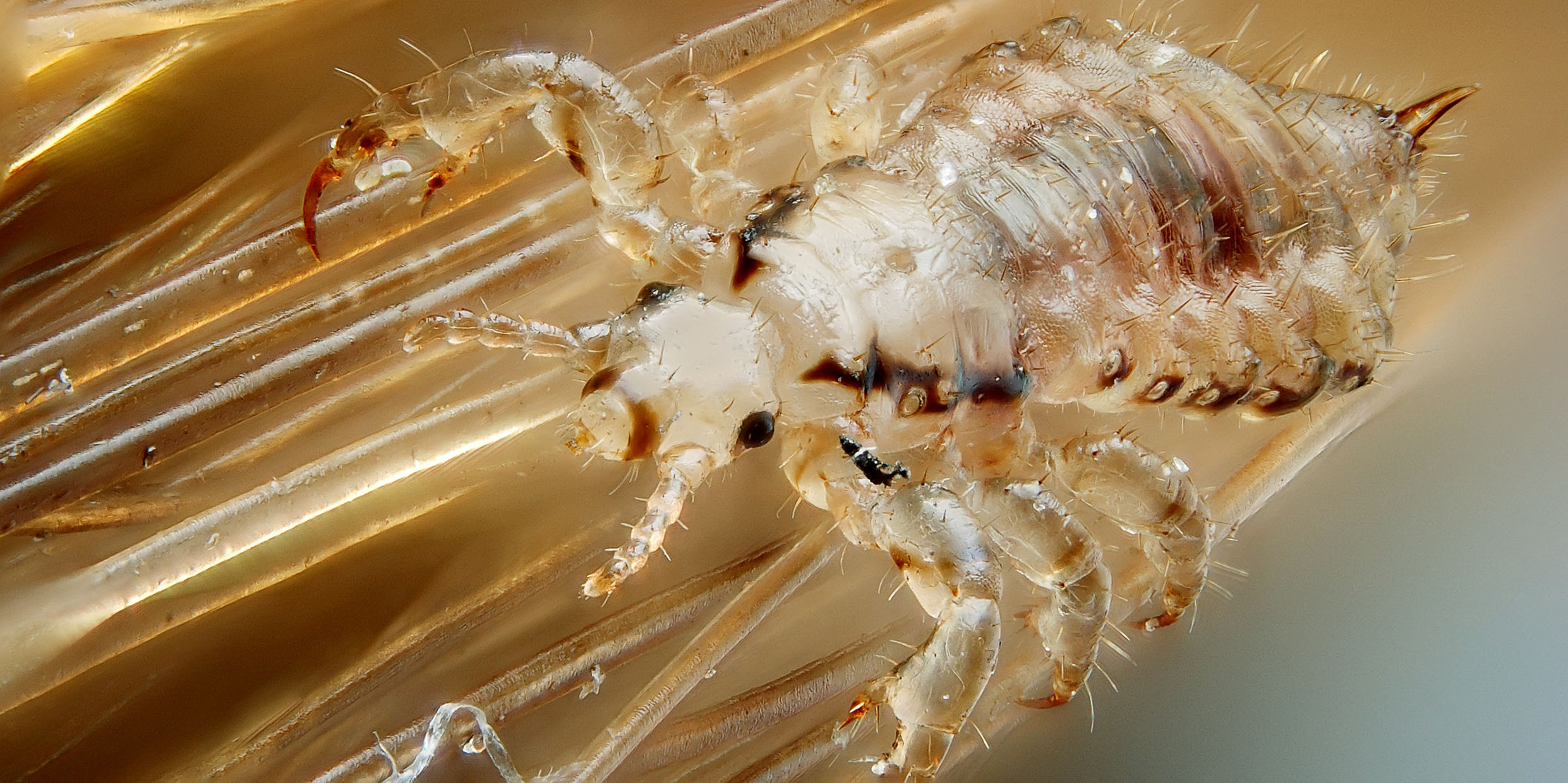Originally published 11 January 1999
If you are reading this at breakfast, you might want to put it aside until a less gastronomically sensitive moment.
This is about lice, about a nasty bacterium named Rickettsia prowazekii, and about life and death.
Let’s start with the lice. More specifically, let’s start with the human louse, Pediculus humanus, better know as the cootie.
Lice have inhabited the human body since…well, since the beginning. Head lice love the dark jungles of the scalp. Body lice may have descended from head lice when humans started wearing clothes.
Lice have a knack for getting around. They flourish wherever humans live in crowded, unsanitary conditions, hopping from person to person.
A scanning electron microscope photograph of a louse was on the cover of a recent issue of Nature, an extraordinary head-and-shoulders shot showing every pore, crease, and bristle of the creature’s beastly visage.
It is a blessing that lice are too small for us to see these details with the unaided eye. Some things are better left unseen, especially at breakfast.
But if you want to see lice close up, go to the website of the Australian louse authority Rick Speare and see the lobster-like claws by which they swing from hair to hair, the blood-sucking mouth, the prickly genitalia.
What you won’t see in the photographs are the tiny pickle-shaped bacteria, Rickettsia prowazekii, that in many parts of the world inhabit the louse’s gut. These are the infectious agents of the disease typhus. And they were also shown on the cover of Nature.
Rickettsia prowazekii is a parasite. It can only live within other cells, at the host cell’s expense.
And guess whose cells it prefers, indeed, demands? Our own. And lice are the vehicles by which the parasite bacteria travel from human to human, making mischief.
Here’s how it usually works: A louse — on the scalp, say — sucks blood from someone who carries the typhus pathogen. Once infected, the louse has only a few weeks to live, but during that time it might make the jump to another person. There, it feeds again by sucking blood. And defecates. The new host human scratches the itch, rubbing the louse’s infected feces into the wound — and another person has contracted typhus.
The disease is most often fatal for people who are elderly, malnourished, or physically exhausted. Typhus typically follows in the wake of wars. Between 1918 and 1922, at the close of World War I, a typhus epidemic in Russia and eastern Europe claimed 20 million victims and caused 3 million deaths.
Today, the disease is most prevalent in the central highlands of Africa and parts of Asia, South America, and Central America. The United States and Europe are mostly typhus free.
The typhus pathogen cannot live on its own; it needs human cells. Lice carry the pathogen from host to host. Humans, lice, and the typhus pathogen are partners in a deadly dance.
Why were two partners to the dance depicted on the cover of Nature? Because geneticists have now completely sequenced the Rickettsia prowazekii genome; that is, they have identified the more than 1 million chemical units along the bacterium’s DNA and mapped the genes.
And the big news is this: Rickettsia prowazekii appears closely related to mitochondria, the oxygen-respiring compartments in the eukaryotic cells that make up the bodies of all complex animals, including ourselves.
Billions of years ago, a free-living common ancestor of both mitochondria and the typhus pathogen evolved the chemical machinery of respiration, the ability to oxidize sugar. This was a hugely important step in the history of life, providing far more energy than is available to non-respiring organisms.
One line of descent from that ancestral organism took up a symbiotic existence inside larger host cells, and eventually became integral and useful parts of our cellular machinery — the mitochondria.
Permanently ensconced within eukaryotic cells, the mitochondria “de-evolved.” They shed redundant genes, simplifying their DNA, and relied on the genetic resources of the cell’s nucleus to supply most of what they needed. It’s an old story. Two can live as cheaply as one if they don’t duplicate resources.
Another line of descent from the ancestral organism led to the typhus pathogen, the louse-borne scourge of humanity. These also took up a parasitic lifestyle, casting off redundant genes and relying for most of what they need upon the genes of host cells.
Unlike the mitochondria, the typhus pathogen provided no benefits to its hosts, and a heap of trouble.
If the typhus pathogen and mitochondria are cousins of a sort, then they are the Cain and Abel of cell invaders; the one causing disease and death, the other facilitating the breath of life.
Both lines of descent from the ancestral organism are successful in their own way. From the human point of view, however, the mitochondria are useful, hard-working members of society, and Rickettsia prowazekii is a lawless buccaneer. If there is a lesson in all of this it is that we are up to our necks — nay, up to our lousy scalps — in a tangled, tangled web of life.



